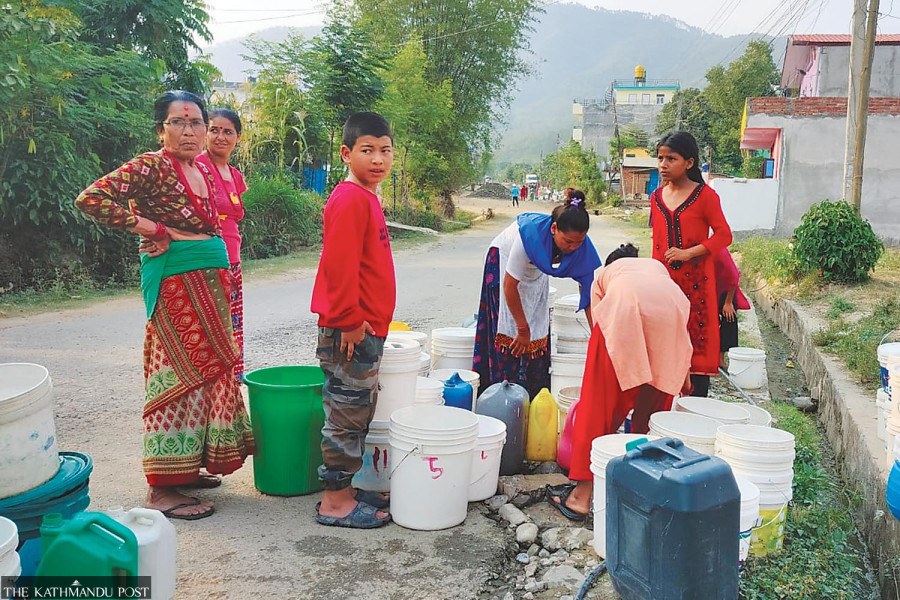Health
Reports show threefold drop in diarrhoeal cases in a year
Surprisingly, those using improved sources of drinking water suffered more diarrhoeal infection than those using unimproved sources.
Arjun Poudel
Diarrhoeal cases have declined threefold in Nepal, multiple reports, including a recent one by the Nepal Statistics Office, show. The Nepal Demographic Health Survey-2022 and a report of the Ministry of Health and Population suggest the same.
Improvements in water and sanitation conditions, personal hygiene and awareness levels are credited with the decline in infection from waterborne diseases, including diarrhoeal infections.
“A decline is observed in diarrhoea from 17 percent in 1995-96 to 6.6 percent in 2022-23, potentially indicating improved sanitation and hygiene practices,” reads a report by the Nepal Statistics Office.
Diarrhoeal disease is a common and seasonal public health concern usually triggered by food and water safety or hygiene issues. It is one of Nepal’s leading causes of morbidity and mortality among young children.
The Nepal Demographic and Health Survey-2022, carried out by the Ministry of Health and Population, also showed that 10 percent of children under 5 have diarrhoea. The prevalence of diarrhoea is highest among children aged 6-11 months at 18 percent, followed by 13 percent each among those aged 12–23 months and less than six months.
Public health experts say the decline in open defecation, the general public’s behavioural change towards hygienic practice, and an increase in literacy and education levels could have also contributed to a decline in diarrhoeal infections.
“Decline in open defecation, rise in education and awareness levels, behavioural changes, improvement in water and sanitation conditions play an important role in cutting the burden of diarrhoeal infections,” said Dr Sher Bahadur Pun, chief of the Clinical Research Unit at Sukraraj Tropical and Infectious Disease Hospital. “We can see a lot of changes in these things, but at the same time, we should not forget that sources of drinking water are still problematic in many places, including in the capital city.”
According to the NDHS report, advice or treatment was sought for 57 percent of children who had diarrhoea in the two weeks preceding the survey, down from 64 percent in 2016.
The report also shows that the percentage of diarrhoeal infection is lower among those with an unimproved source of drinking water at 4 percent than among those with an improved source at 11 percent.
Experts say that so-called improved sources of drinking water are still not safe to drink.
“E.coli and coliform-like hazardous microbes get detected in most water resources, including in the samples of bottled water,” Pun said. “We must be more cautious while drinking water, as the monsoon season has just started and most water sources get contaminated with floodwaters.”
Earlier in March, drinking water samples collected from public taps and community schools in Godawari Municipality of Lalitpur were found to be contaminated with faecal coliform.
Faecal coliform, a microscopic organism, lives in the intestines of warm-blooded animals or their faeces. Its presence means that the drinking water being used by locals of Godawari is contaminated with sewage.
The Ministry of Health and Population’s annual report for the fiscal year 2022-23 also shows a three-fold decline in diarrhoeal infections. According to the report, the national incidence rate of diarrhoea was 115 per 1,000 under-five children in 2022-23 compared to 365 in the fiscal year 2021-22.
The ministry’s report showed four under-five deaths from diarrhoeal infection in the fiscal year 2022-23 compared to 34 deaths in 2021-22.
Of the four deaths that occurred in the fiscal year 2022-23, one each was recorded in Bagmati, Madhesh, Karnali, and Sudurpaschim provinces, with no reported diarrhoeal death in Lumbini, Koshi, and Gandaki provinces.
Contrary to the NDHS, the health ministry’s report shows that Karnali Province had the highest incidence of diarrhoea—216, followed by Lumbini Province’s 161. The lowest incidence was reported in Bagmati Province at 78.
According to the World Health Organisation, diarrhoea is the second leading cause of mortality in children under five. The disease has also been linked with growth and cognitive shortfalls in children, especially in marginalised communities.
Doctors say the only ways to prevent people from dying of water-borne diseases, including diarrhoea, are to raise awareness and ensure safe drinking water.
They say a combination of careful surveys, ensuring safe drinking water, maintaining sanitation and hygiene, social mobilisation and treatment are required to contain the spread of the diarrhoeal infection.




 6.1°C Kathmandu
6.1°C Kathmandu














